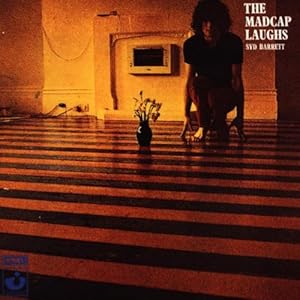Royal Scam is like the middle child in the Steely Dan
discography, a precocious adolescent record that is somewhat awkward in
its nascence while offering tantalizing hints at the brilliance and
sophistication that became the band's hallmarks. I don't listen to it nearly as often as its immediate predecessor
Katy Lied or masterful successor
Aja, but each time I do, I remember what I'm missing. Those might be two of my favorite albums, but
Scam is an underappreciated gem hiding in the shadows of its bigger brothers. I think it unfairly suffers for sounding, perhaps, too similar to
Katy Lied while not quite achieving the same level creamy sophistication that was captured on
Aja. Indeed, many of the songs would fit in nicely with the set on
Katy Lied, and if you were so inclined, a seamless resequencing of the two records isn't a far fetched idea. But regardless of
Scam's lack of further groundbreaking in terms of stylistic appeal, if you like Steely Dan, then you should find plenty to sink your teeth into.
Scam has all the characteristics I attribute to Becker and Fagen's work.
As per usual, no two songs sound alike, and each one features a core
group enhanced by a veteran session man. These contributions provide a
variety of aural textures that buoy the program. Whether they are anchoring the rhythm section or setting the front line on fire, you can always expect fireworks from the sidemen on a Steely Dan LP. On almost every track, I really enjoy the
Chuck Rainey's solid and soulful bass playing, for instance, and prominent work by guitarist
Larry Carlton imparts a dazzling and sometimes grainy feel that was missing among the fold of
Katy Lied. (The scholars among us will note that Carlton did the guitar bit on
Katy Lied's "Daddy Don't Live in That New York City No More.") You'll also note the work of Steely stalwarts Denny Dias, playing the first solo in "Green Earrings" and
Elliott Randall, who does the second. Becker steps out from behind the glass and gives the solo on "The Fez." And while he only gets a single solo spot, Paul Griffin plays piano on "Sign In Stranger," an ascerbic poke at musician union cronies. It's easily is my favorite track and possibly the best solo on
the record.

Of course, it wouldn't be Steely Dan if the lyrics didn't tell great
stories (part fact, part fiction?) in entertaining and cryptic language
colored by great one-liners. Right out of the gate, Fagen spins sly
yarns about counterculture kingpins,
the music business, coming of age,
and the plights of stupid young lovers, with more than a dash of wry
irony and humor. Musical styles bridge the territory between jazz, soul,
blues, pop, disco, and full-out rock and roll. I suppose that is what
the word "fusion" is for, but because it has acquired other connotations
that do not apply to Steely Dan, I want to steer away from it. If you're having trouble decoding some of the lyrics or want to fully appreciate the juicy imagery employed by Fagen, then stop by and have a look at the
Steely Dan Dictionary. It's a user supported thing, so shoot them an email if you've got something to share. If that doesn't do it for you, then visit the
Official Steely Dan Homepage FAQ -- which actually references the aforementioned SD Dictionary. I think you'll find the website is as entertaining as some of their liner notes. I've been listening to this record for a few hours now, and started my latest affair with it a few days ago. It's a rare thing when a record wears in to the equivocal point of a runner's high, providing
more enjoyment on repeat listening, rather than less. There aren't many acts who can pull that off. As far as music goes, I love these guys. And I hope they don't ever stop.
 Desde mi pampa querida
Desde mi pampa querida












